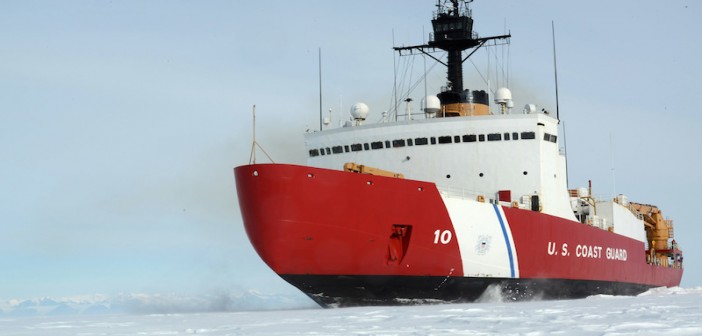The fate of funding to begin construction of the nation’s first polar icebreaker in 40 years will be determined by Congress just before Christmas.
A showdown over the federal budget had been expected this Friday, Dec. 7, the deadline facing Congress to pass seven outstanding spending bills in order to avoid a partial government shutdown. But lawmakers have agreed to push the deadline to Dec. 21 due to the death of former President George H.W. Bush and funeral services to be held this week in Washington.
This gives lawmakers who want to include $750 million for the Coast Guard’s icebreaker program another two weeks to lobby for funds to replace the aging icebreakers Polar Star and Healy that were built in the 1970s and frequently break down.
The choice for lawmakers is whether to fund the construction of President Trump’s border wall with Mexico to curb immigration, or build the polar icebreakers that are used for scientific research, defense, oil spill response, rescuing ships stuck in the ice, and for cutting pathways that allow commercial vessels to navigate through the Arctic ice. The Coast Guard wants a total of six new icebreakers to be constructed over the next several years.
Lawmakers must decide which is the greater threat: immigrants from Central and South America, or the growing influence of Russia and China in waters that have become increasingly busy for international shipping and military activities due to warming temperatures and melting ice.
Congress let the Coast Guard’s polar icebreaker program languish for decades, allowing the fleet to diminish to just two vessels that are now old and obsolete and in a constant state of costly repair.
Meanwhile, rivals have been gearing up their fleets and influence. Russia has more than 40 icebreakers (several of which are nuclear-powered ships) working in the Arctic area, a buildup that has alarmed some defense experts who fear the Russians seek economic and military dominance in the region. China has just built its third ice-breaking ship. Finland has 10 icebreakers, and Canada and Sweden each have seven.
At a congressional hearing last week, Rep. John Garamendi, D-Calif., the top Democrat on the Coast Guard and Maritime Transportation subcommittee, echoed this fear saying that expanding the U.S. icebreaker fleet will help counter this threat. With only two icebreakers, the U.S. is “hard-pressed” to stop the Russians, he said.
But some Republicans see illegal immigration as a greater national threat, and they are pushing to fund the border wall before the Democrats take control of the House of Representatives next year.
President Trump has said he wants both, yet he has threatened a government shutdown if he doesn’t get the $5 billion he is seeking for the border wall.
This division explains why the Senate and House have produced two different versions of the spending bills for the Department of Homeland Security, which includes the Coast Guard. The Senate agreed to spend $750 million on the icebreakers, but just before the midterm elections the House pulled funding for the ships and diverted it to another presidential priority — the border wall.
It’s not clear who will blink first. Will politics win the day as Republicans see the chance to score big with the president’s base by funding the border wall? Or will they come down on the side of assuring U.S. interests in a new frontier for commerce and defense?
If the wall wins, the Coast Guard will be a big loser. The icebreaker program will suffer more delays, and supporters will have to start over again next year to convince incoming lawmakers that cutting ice and beefing up the U.S. Arctic presence is more important than building walls.





